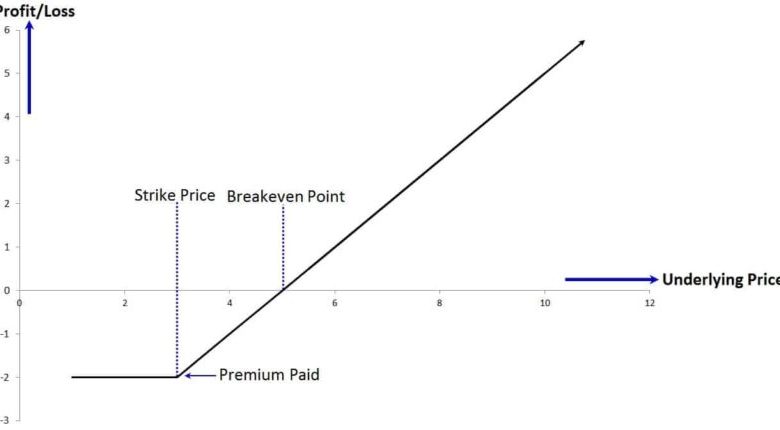Beginner-friendly options strategies in the UK

When trading options, it is essential to use a strategy as it will help improve your chances of success and make the process more manageable. They also provide a way to minimise risk.
Starting with a simple strategy is advisable if you are new to options trading. Once you understand this, you can move on to more complex approaches.
Long Call
A long call is a type of options strategy that involves buying a call option. It gives you the right to buy the underlying asset at a set price (the strike price) on or before a specific date (the expiry).
The primary advantage of this strategy is that it has unlimited profit potential. Because of this, the underlying asset can continue to rise indefinitely. The downside is that it has limited downside protection.
This strategy is most suitable for bullish investors who think the underlying asset will increase value.
Long Put
A long put is a type of options strategy that involves buying a put option. It gives you the right to sell the underlying asset at a set price (the strike price ) on or before a specific date (the expiry).
This strategy has limited downside risk. Because of this, the most you can lose is the premium you paid for the option. The potential profit is limited, as the underlying asset can only fall to $0.
This strategy is most suitable for bearish investors who think the underlying asset will decrease value.
Short Call
A short call is a type of options strategy that involves selling a call option. It gives the buyer the right to buy the underlying asset from you at a set price (the strike price) on or before a specific date (the expiry).
This strategy has limited downside risk. Because of this, the most you can lose is the premium you received for selling the option. The potential profit is limited, as the underlying asset can only fall to $0.
This strategy is most suitable for bearish investors who think the underlying asset will decrease value.
Short Put
A short put is a type of options strategy that involves selling a put option. You will have the right to sell the underlying asset at a set price (the strike price) on or before a specific date (the expiry).
This strategy also has limited downside risk. Due to this, the most you can lose is the premium you received for selling the option, and the potential profit is also limited.
This strategy is most suitable for bullish investors who think the underlying asset will increase value.
Long Straddle
A long straddle is a type of options strategy that involves buying a call option and a put option with the same strike price and expiry date.
This strategy has unlimited profit potential. Due to this, the underlying asset can continue to rise or fall indefinitely. The downside is that it also has unlimited downside risk.
It is most suitable for investors who expect a significant move in the underlying asset but are unsure of the direction.
Short Straddle
A short straddle is a type of options strategy that involves selling a call option and a put option with the same strike price and expiry date.
This strategy also has limited downside risk. Because of this, the most you can lose is the premium you received for selling the options, and the potential profit is also limited.
This strategy is most suitable for investors expecting a small move in the underlying asset or who think it will trade sideways.
Long Call Spread
A long call spread is a type of options strategy that involves buying a call option with a low strike price and selling a call option with a high strike price.
The advantage of this strategy is that it has limited downside risk. Due to this, the most you can lose is the premium you paid for the options, and the potential profit is also limited.
This strategy is most suitable for bullish investors who think the underlying asset will increase in value but don’t want to risk paying too much for the option.
You can visit this web address to start trading with options today.




